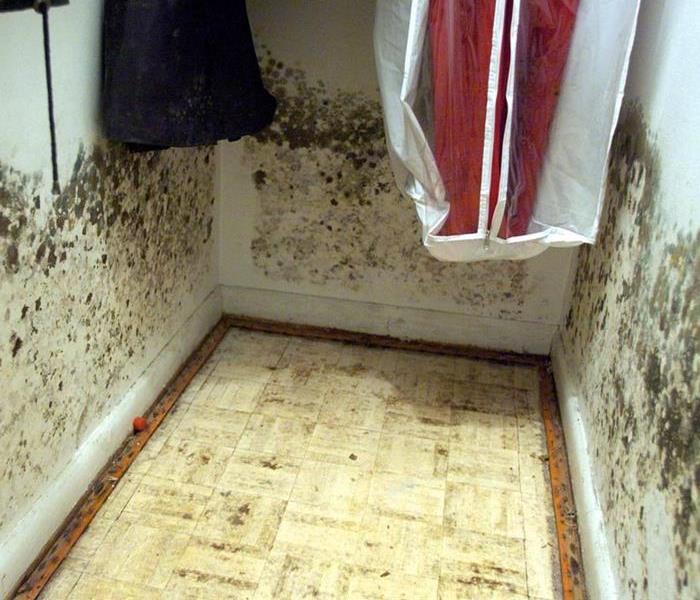Clear Lake Home Safety: Act Fast to Clean Up Mold Safely After a Storm
6/15/2016 (Permalink)
The greater Houston area is known for its challenging weather. In recent months, we have seen our share of devastating weather events, including significant widespread flooding. What many people don’t realize is that in as little as 48 hours after water damage, mold starts to develop. Left unchecked, mold can spread quickly throughout a property, leading to a large-scale mold infestation. That is why it is imperative that storm and flood damage cleanup begin as quickly as possible.
First, it is important to be able to recognize and identify mold in your home. If you see or smell any of the signs of mold, the quicker you begin the cleaning and disinfecting process, the better. Mold is airborne, which means its spores travel freely through the air. So when you run the air conditioner, use a fan, turn on exhaust fans, or even just open the windows for a fresh breeze, mold is on the move and potentially spreading to other areas of your home.
While it is common for mold to be present in bathrooms and other warm damp areas of the home here in the Houston area, mold is often found in other areas of the home as well, after water damage, a fire, or a flood. Since mold has potential effects on your family’s health, you will want to deal with it without delay. Once mold is identified, you will need appropriate protective gear, cleansing agents, and tools. Any area that has visible mold will need to be scrubbed with a water and bleach solution, rinsed, and dried thoroughly before moving onto the next area.
If you have a widespread mold infestation, it is highly recommended that you turn off your HVAC and not operate any fans until the mold remediation process is complete. It is best to start in one area of the home and only move to the next after all steps are complete. To prevent airborne mold from moving back in, seal off completed rooms, including all vents to the HVAC and the door jambs,.
If a musty or mildew smell remains after the entire property has been carefully cleaned and dried, chances are mold is growing behind the walls or ceiling, in the air ducts or flooring, or perhaps even in furniture and other personal belongings. The Houston SERVPRO team often sees this type of extensive mold infestation in homes and businesses where original flood damage was not properly remediated.
Frequently, property owners rush the cleaning, disinfecting, drying, and dehumidifying process, causing mold to develop behind walls, under cabinets, and in carpets. While the goal is to always get back into your home as quickly as possible after a natural disaster strikes, please realize that doing so may result in greater damage down the road. SERVPRO of Clear Lake is available whenever disaster strikes, regardless of how big or small the problem. Allow us to start the water damage cleanup and restoration process immediately to help prevent serious mold infestations in the future.
About The Clear Lake SERVPRO
SERVPRO of Clear Lake is Faster to Any Size Disaster, helping residential and commercial property owners when natural disasters, water damage, sewage backups, floods, fires, mold infestations, and other events happen. In addition to Clear Lake, we also proudly serve surrounding communities.

 24/7 Emergency Service
24/7 Emergency Service
